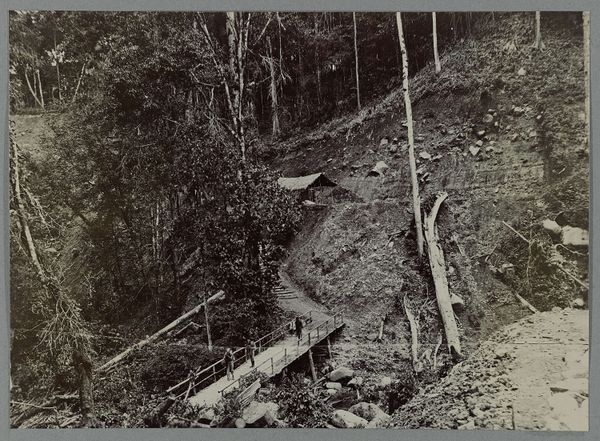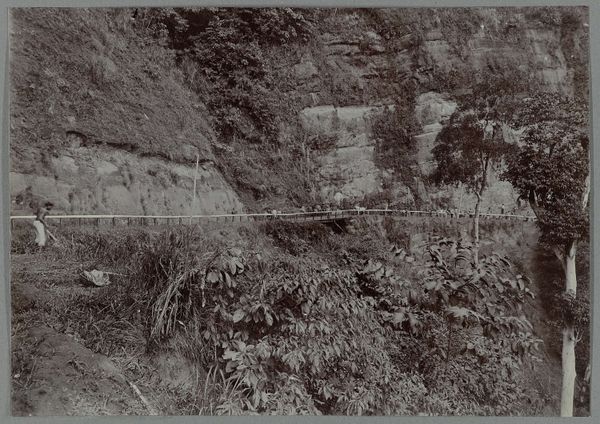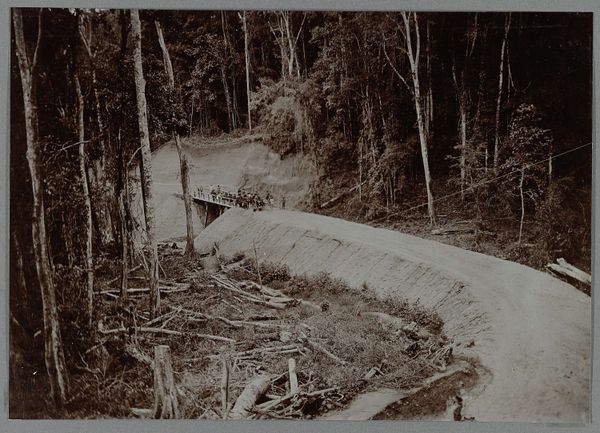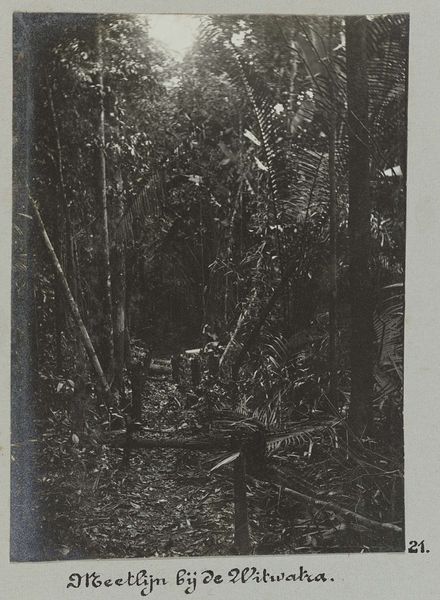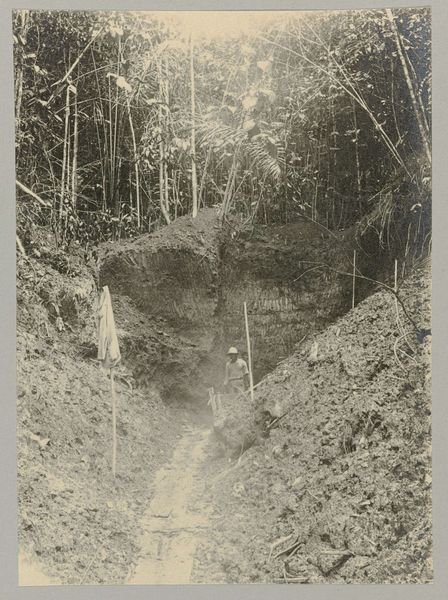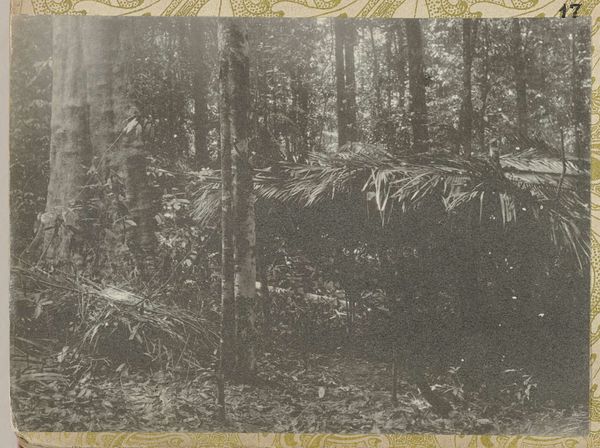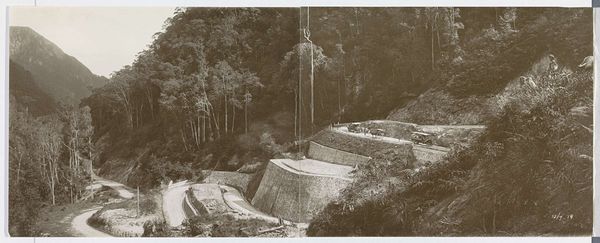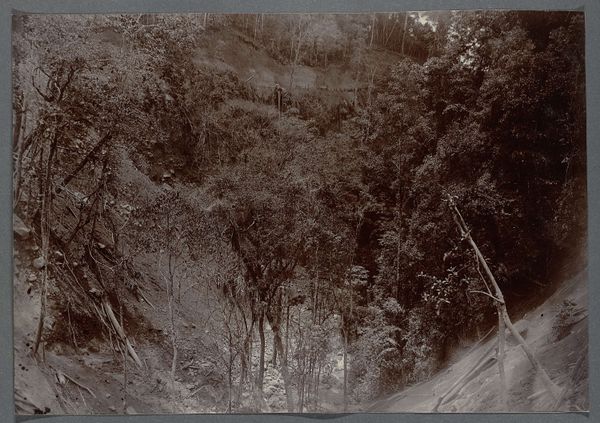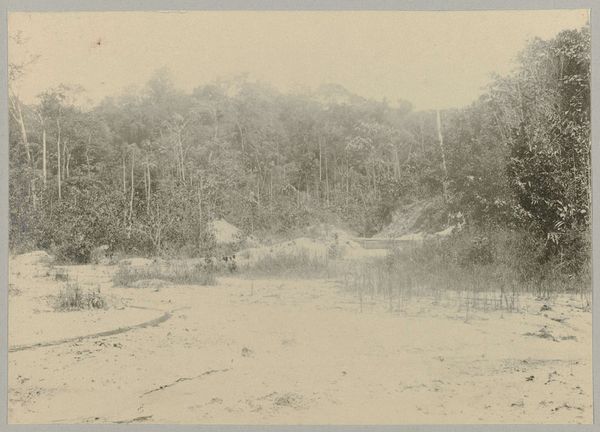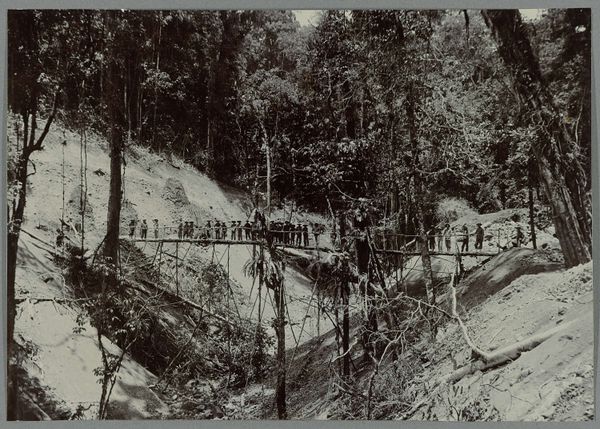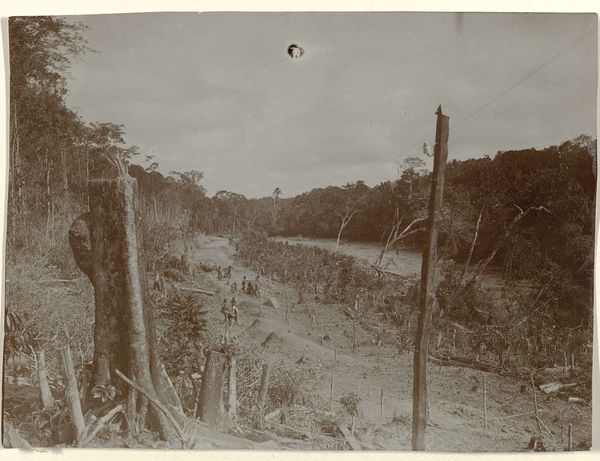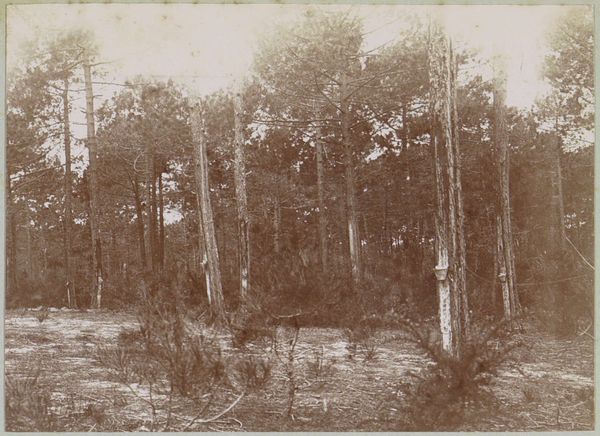
print, photography
# print
#
landscape
#
photography
#
mixed medium
#
mixed media
#
realism
Dimensions: height 138 mm, width 200 mm
Copyright: Rijks Museum: Open Domain
Editor: So, here we have a mixed-media piece, a print of a photograph titled "Brug over de Timbang Gadja", dating from sometime between 1903 and 1913. It depicts a bridge in a landscape. It’s stark, almost clinical, despite being of a natural environment. What do you make of its documentary style? Curator: That “clinical” feel is important. Colonial photography like this wasn't just about documenting places; it was about asserting control. This bridge isn't simply *there*; its depiction here highlights engineering prowess, implicitly contrasting it with a perceived 'primitive' environment. Think of how photography served as a tool for cataloging, classifying, and ultimately, governing colonized territories. Do you see the absence of people as significant? Editor: Absolutely, now that you mention it. There are figures crossing the bridge, but they're so small. Their insignificance against the backdrop of this grand "improvement" emphasizes that point. The lack of prominent figures also creates an idea that the bridge just *exists*, further reinforcing this idea of constructed control. Curator: Precisely. It minimizes any indigenous contribution or pre-existing systems. This image would have been circulated back in Europe, bolstering a particular narrative of progress and the colonial project. Consider the politics embedded in how landscapes are represented. Was it empty? Wild? Or was that just how it was framed for political and social purposes? Editor: So, it’s less a neutral depiction and more a strategic construction of an image to reinforce colonial power? Curator: Exactly. We should ask, who built the bridge, and under what conditions? What impact did it have on local communities and their existing infrastructure? Photography, even seemingly objective landscape photography, played an active role in shaping perceptions and justifying imperial ambitions. Editor: This really shifts how I see historical photography. It’s fascinating to think about how seemingly straightforward images can carry so much loaded meaning. Curator: Indeed. Examining art through a historical and political lens reveals its role in shaping our understanding of the world and its power dynamics.
Comments
No comments
Be the first to comment and join the conversation on the ultimate creative platform.
